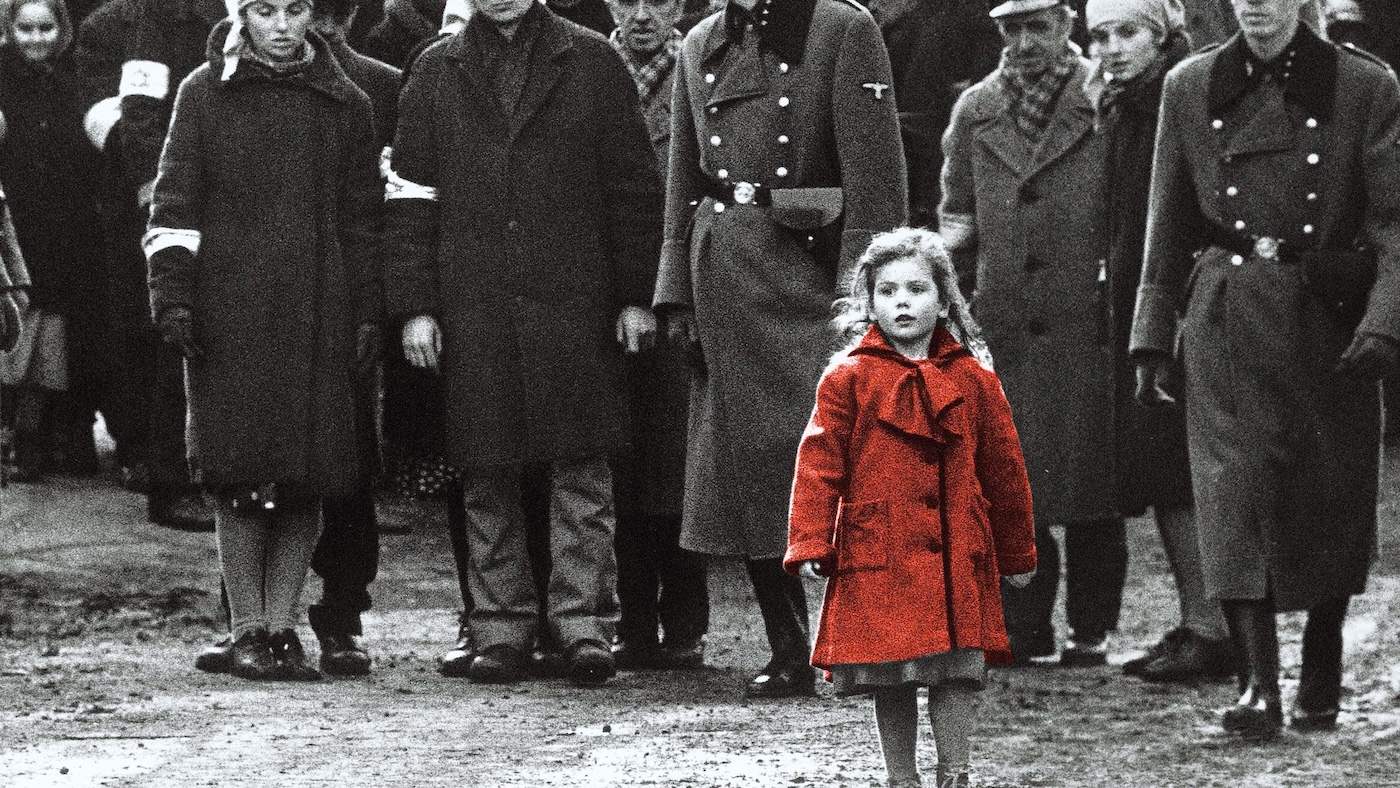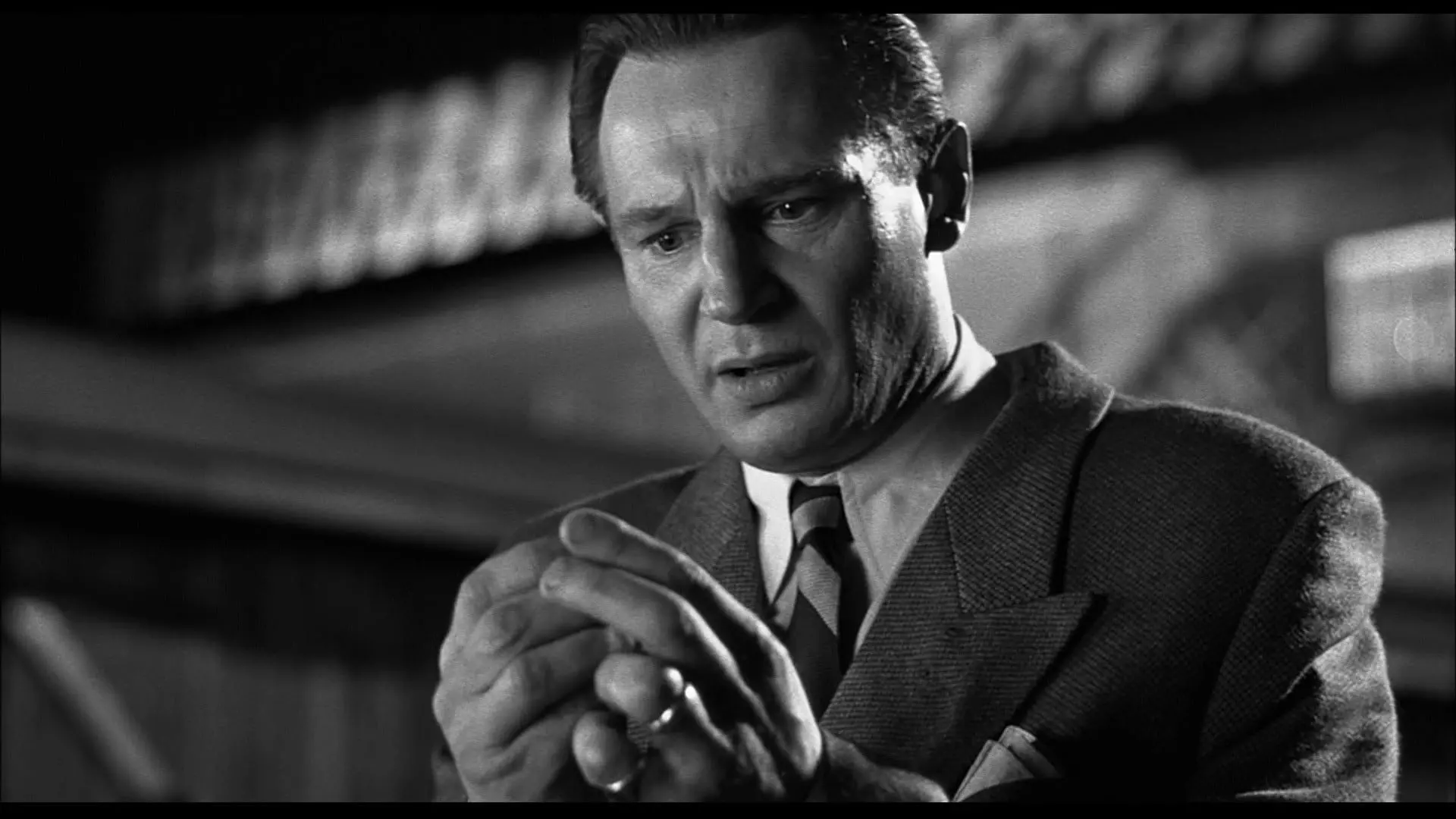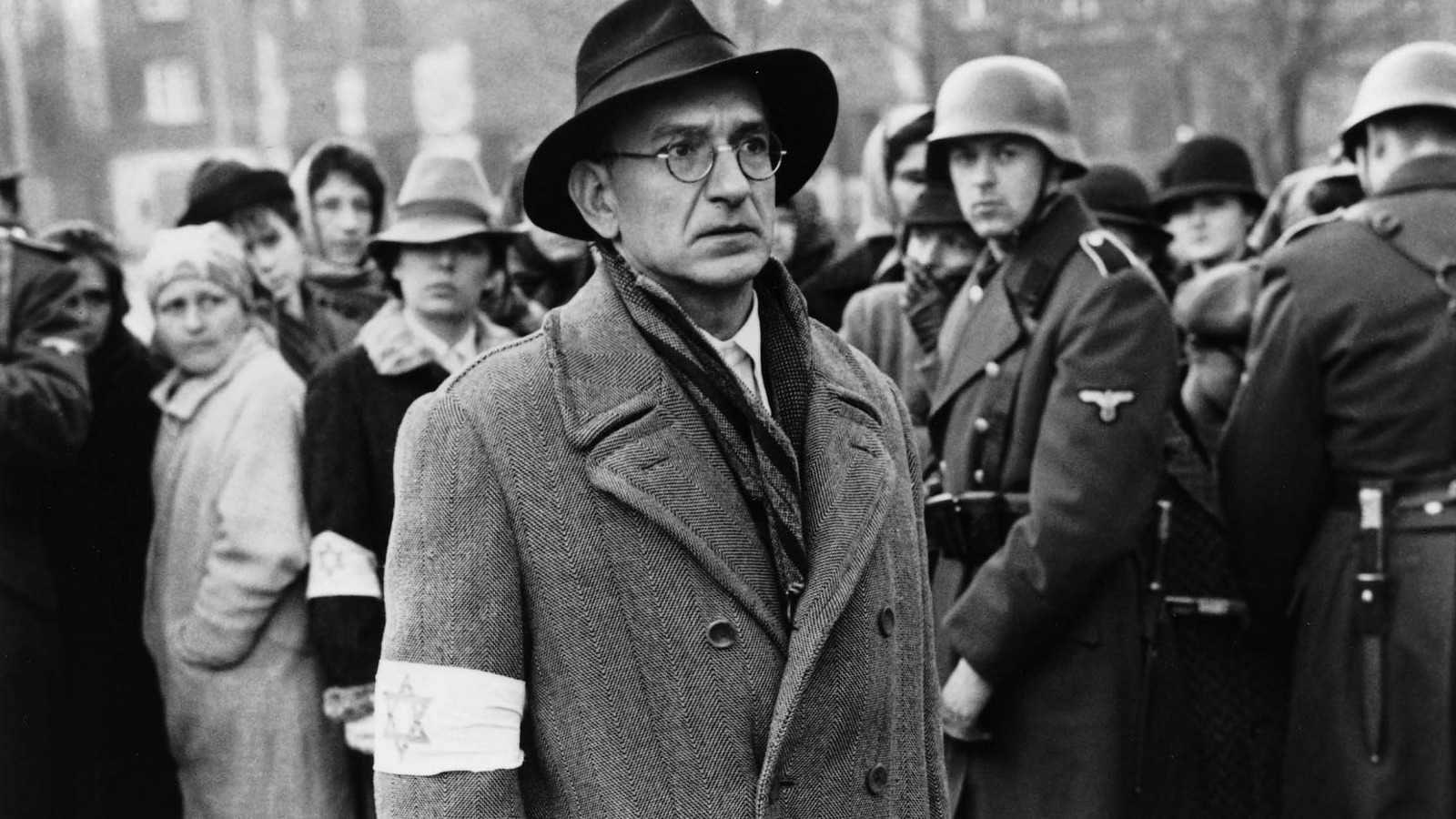Schindler’s List | Directed by Steven Spielberg // Starring Liam Neeson, Ben Kingsley, Ralph Fiennes, Embeth Davidtz, and Caroline Goodall
Set the mood with some music!
Summary (Spoiler-free): Set during the Holocaust, Schindler’s List tells the true story of Oskar Schindler, a German industrialist who goes from war profiteer to unexpected savior. As the Nazis systematically annihilate European Jews, Schindler risks everything to save over a thousand lives by employing them in his factories.

It’s hard to talk about Schindler’s List the way you talk about other movies. This isn’t a “favorite movie” kind of experience. It’s not something you throw on a list next to a superhero flick or a popcorn blockbuster. Watching this film is something else entirely — more like a reckoning. You don’t enjoy Schindler’s List, you endure it. And that’s exactly the point.
Steven Spielberg — a director often associated with wonder and adventure — made something here that feels sacred. He doesn’t sensationalize the horror. He doesn’t soften the edges. He stares directly into one of the darkest chapters of human history and forces you to do the same. And somehow, through all of that, he also finds a way to make it about hope. Not naïve optimism — but the kind of hope that costs something.
At its core, Schindler’s List is a story about transformation — not just of one man, but of what moral courage can look like when it’s pushed to its limit. Oskar Schindler starts as an opportunist, a man looking to profit from war. He’s charming, a little vain, deeply flawed. But as the Nazi atrocities escalate around him, something shifts. What begins as transactional becomes something else. Something human.
The screenplay doesn’t sensationalize Schindler’s heroism. It doesn’t portray him as a saint. That’s what makes his arc so moving. He’s complicated. At times, he's complicit. But ultimately, he chooses to act. And that choice — made over and over, in increasing defiance of the Nazi machine — becomes the soul of the film.
Equally important is the story of the people he saved. This isn’t just Schindler’s story — it’s their story, too. We see their fear, their grief, their quiet dignity. Characters who in another film might be reduced to symbols are fully realized human beings here. That’s part of what makes the ending so emotionally overwhelming — not just what Schindler does, but what it costs everyone involved.

Spielberg’s direction is unlike anything else in his filmography. There’s no signature flair, no blockbuster spectacle, no sweeping camera to distract from the subject matter. He disappears into this film — and that’s what makes it so powerful. You can feel how personal this story is to him, and yet he handles it with the humility and precision of someone who knows the story is bigger than he is.
One of the boldest choices Spielberg makes is to strip everything down visually. The decision to shoot in black and white isn’t just a nod to archival footage or a stylistic flourish — it’s a moral stance. It drains the screen of glamour and forces you to confront the events in a stark, unfiltered way. There’s no filter, no distance, and no color to distract or romanticize. Even the lighting feels intentional, often casting shadows that visually reflect the moral darkness of the time.
But what makes Spielberg’s direction truly masterful is his restraint. He doesn't linger on brutality for shock value. He doesn’t guide you emotionally with manipulative cues. Instead, he constructs scenes that let the horror speak for itself. He trusts silence. He trusts the actors. He trusts you. When he does break that visual code — like with the infamous red coat — it means something. It’s not just a stylistic break. It’s a visual scream.
And yet, even amid the horror, there are moments of beauty. Not beauty that forgives or softens, but beauty that reflects humanity’s resilience. Spielberg never lets you forget the stakes, but he also never lets you forget that even in unimaginable circumstances, people found ways to care, to protect, and to survive.
Liam Neeson gives a career-best performance as Oskar Schindler. He plays him as a man of contradictions — charming and calculating, self-serving but capable of profound compassion. Watching his transformation over the course of the film isn’t just compelling — it’s heartbreaking. He doesn’t deliver some big, sweeping arc. It’s subtle. Quiet. Earned.
Ralph Fiennes is terrifying as Amon Göth. He doesn’t play him like a movie villain. He plays him like a human being infected by power and ideology — and that’s what makes him so terrifying. Ben Kingsley, as Schindler’s right-hand man Itzhak Stern, is the film’s emotional grounding wire. His quiet strength gives the story its moral backbone.
On a technical level, Schindler’s List is flawless. You don’t see the seams, and that’s the point. The cinematography by Janusz Kamiński is stark, raw, and hauntingly beautiful. The production design feels lived-in but never stylized. The editing by Michael Kahn has an emotional rhythm to it — scenes stretch when they need to, collapse when they must. The pacing is deliberate, unrelenting, but not exhausting. It wears you down in the right way.
And then there’s John Williams’ score. It’s one of the most iconic and devastating scores in cinema history, led by Itzhak Perlman’s mournful violin. Williams doesn’t overwhelm you with emotion — he underscores it with restraint. His compositions are sorrowful, delicate, and spare, often built around just a few aching notes. But those notes carry the weight of history.
What’s remarkable is how Williams holds back. There’s no swelling hero’s theme here. No triumphant fanfare. Just sorrow, memory, and grace. It’s music that mourns. That remembers. That honors. When it swells, it does so with the reverence of a eulogy, not for spectacle, but for remembrance.
Every technical element of this film serves the same purpose: to bear witness. To never look away. To never let you forget.

This film, unfortunately, feels all to familiar today. Yes, the events it depicts took place nearly a century ago, but the warning it delivers is timeless — and, increasingly, timely. The rise of authoritarianism, scapegoating of marginalized communities, weaponization of propaganda, and erosion of truth are no longer confined to the past. The specifics may change — the slogans, the leaders, the targets — but the machinery of hate is alarmingly familiar.
That’s what makes revisiting Schindler’s List so vital. It’s not just a historical document. It’s a mirror. It asks: What would you do? What would you tolerate? What would you excuse because it doesn’t affect you, until it does? The film doesn’t preach, but its very existence is a call to vigilance. It reminds us that genocide didn’t begin with gas chambers — it began with rhetoric, dehumanization, and silence. Spielberg made this movie to ensure we don’t forget. Watching it now, with the benefit (and burden) of hindsight, it feels less like a memory and more like a warning flare.
Schindler’s List is one of the most important films ever made. Not just for what it depicts, but for how it depicts it. It refuses to look away — and demands the same of us. Spielberg made this movie not because he had something to prove, but because he had something to preserve. A warning. A memory. A prayer.
It’s not an easy film to watch. It shouldn’t be. But it is essential. It’s art that bears witness to cruelty, to courage, to the complexities of human nature. And somehow, in the end, it reminds us that even in the face of overwhelming darkness, one person’s choices can matter. That doing good, even imperfectly, still matters.
You don’t walk away from Schindler’s List untouched. You carry it with you. It teaches us that we are all human beings. The moment we stop seeing people as people, we lose something essential. We lose compassion. We lose decency. We lose ourselves.